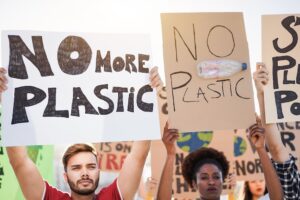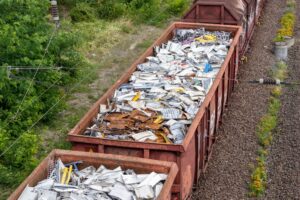Why Indigenous Communities Are Central to Climate Solutions
When conversations about climate change dominate headlines, they often focus on governments, corporations, and scientists. But a vital voice is still too often left out — the voice of Indigenous communities, who have long stewarded ecosystems, protected biodiversity, and warned against environmental imbalance.
Indigenous peoples manage or hold tenure over at least 25% of the Earth’s land surface, including some of the most biodiverse and carbon-rich areas on the planet. Their contributions to climate solutions aren’t just symbolic — they’re essential.
From resisting deforestation to restoring degraded land, Indigenous groups are at the forefront of real, grounded climate action — often without the recognition or funding they deserve.
Indigenous Climate Action in Practice
Protecting Forests and Carbon Sinks
Forests are among our most powerful carbon sinks, absorbing CO₂ and regulating temperature. Many of the most critical forests — including the Amazon, boreal forests, and mangroves — overlap with Indigenous lands.
- In the Amazon, Indigenous territories have dramatically lower deforestation rates than surrounding areas.
- In Canada, First Nations are co-managing boreal forests and creating conservation zones to protect biodiversity and carbon storage.
- In Papua New Guinea, Indigenous leaders have resisted industrial logging and defended ancestral rainforests.
Protecting Indigenous land rights has proven more effective at preserving forests than many top-down conservation policies. In short: the land stays healthier when Indigenous communities are in charge of it.
Practicing Regenerative Land Stewardship
Many Indigenous groups use traditional ecological knowledge — passed down for generations — to manage land, water, and wildlife sustainably.
- Fire management by Aboriginal Australians uses low-intensity cultural burns to prevent catastrophic wildfires.
- Agroforestry and rotational farming techniques used by Mayan and Andean communities maintain soil fertility and prevent erosion.
- Seed saving and biodiversity preservation among Indigenous farmers strengthens food systems in the face of climate disruption.
These practices aren’t outdated — they’re adaptive, localized, and proven to work under changing conditions.
Defending Water and Sacred Sites
Water is life — and many Indigenous communities are fighting to protect it.
- The Standing Rock Sioux in the U.S. led a global resistance movement against the Dakota Access Pipeline.
- In New Zealand, the Whanganui River was granted legal personhood, thanks to Māori advocacy.
- Indigenous water defenders in Guatemala, Ecuador, and Canada have resisted mining and fracking that threaten drinking water and biodiversity.
These efforts protect far more than culture — they protect watersheds that sustain millions.
Leading Legal and Political Change
Indigenous leaders are shaping international climate policy and legal frameworks:
- At COP climate summits, Indigenous delegations advocate for land recognition, climate finance access, and protections for frontline communities.
- The UN Declaration on the Rights of Indigenous Peoples (UNDRIP) affirms the right to participate in decisions that affect their lands and resources.
- Indigenous climate lawsuits are gaining traction, challenging governments and corporations for violating treaty rights and environmental laws.
Despite limited resources, these legal victories are shaping precedent for climate justice globally.
Innovating with Tradition and Technology
Indigenous climate action blends ancestral knowledge with modern science:
- Combining satellite monitoring with community patrols to track deforestation
- Using drones to map endangered species habitats
- Launching climate education and adaptation programs in remote villages
- Collaborating with universities and NGOs to document traditional ecological knowledge for future resilience
These efforts show that Indigenous wisdom isn’t frozen in time — it’s evolving, dynamic, and deeply relevant.
Why Climate Solutions Must Include Indigenous Peoples
Indigenous communities:
- Protect 80% of the world’s remaining biodiversity
- Manage ecosystems with some of the lowest emissions per capita
- Possess intimate knowledge of local ecological systems
- Face disproportionate climate impacts despite contributing the least to the crisis
Excluding them from funding, governance, or recognition isn’t just unjust — it’s counterproductive. Climate solutions that ignore Indigenous voices risk failure, while those that center Indigenous leadership often succeed.
Barriers Indigenous Communities Still Face
Despite their leadership, Indigenous groups face:
- Lack of legal land recognition
- Violence, displacement, and criminalization of defenders
- Underfunding and exclusion from mainstream climate finance
- Extractive development pressures from corporations and governments
Climate justice means more than emissions reduction. It means supporting those who are already doing the work — and protecting them from the systems that seek to erase them.
Final Thoughts: Indigenous Wisdom Is Climate Wisdom
Indigenous communities aren’t waiting for permission to act on climate change — they’ve been doing it for centuries. What’s needed now is not just recognition, but partnership, respect, and restoration of land rights.
They don’t just offer solutions — they embody a way of relating to the Earth that sees humans not as owners, but as stewards.
That’s the mindset we need most right now. And it already exists — if we’re willing to listen.
FAQs: Indigenous Climate Action
Why are Indigenous communities important in fighting climate change?
They protect major ecosystems, hold deep ecological knowledge, and manage land in ways that preserve biodiversity and store carbon.
Do Indigenous practices really work in modern climate efforts?
Yes. Practices like fire management, rotational farming, and community-based conservation are scientifically validated and often outperform industrial approaches.
Are Indigenous communities included in climate negotiations?
Progress is being made, but many still face exclusion. Representation is growing, but funding and decision-making power are lagging.
What’s the difference between Indigenous-led conservation and government parks?
Indigenous conservation centers people, culture, and land as interconnected. Government-led models often impose restrictions without community involvement.
How can non-Indigenous people support Indigenous climate work?
Amplify their voices. Donate to Indigenous-led organizations. Support land back movements. Advocate for legal recognition and climate funding equity.









Reader Interactions